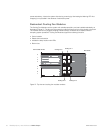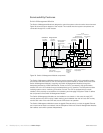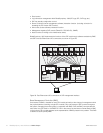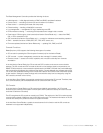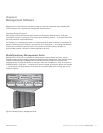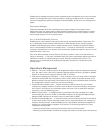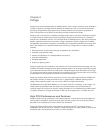46 BladeSymphony 1000 Architecture White Paper www.hitachi.com
BladeSymphony Management Suite provides centralized system management and control of all server,
network, and storage resources, including the ability to setup and configure servers, monitor server
resources, integrate with enterprise management software (SNMP), phone home, and manage server
assets.
Deployment Manager
Deployment Manager allows the mass deployment of system images for fast, effective server
deployment. Users can deploy system images and BIOS updates across multiple chassis in multiple
locations. Updates are executed by batch distribution of service packs and Linux patches to server,
saving a large number of hours for patching tasks.
N+1 or N+M Cold Standby Fail-over
BladeSymphony 1000 maintains high uptime levels through sophisticated failover mechanisms. The
N+1 Cold Standby function enables multiple servers to share standby servers, increasing system
availability while decreasing the need for multiple standby servers. It enables the system to detect a
fault in a server blade and switch to the standby server — manually or automatically. The hardware
switching is executed even in the absence of the administrator, enabling the system to return to normal
operations within a short time.
With the N+M Cold Standby function there are “M” backup servers for every “N” active servers, so
failover is cascading — in the event of hardware failure, the system automatically detects the fault and
identifies the problem by indicating the faulty module, allowing immediate failure recovery. This
approach can cut total downtime by enabling the application workload to be shared among the
working servers.
Operations Management
• Reports — real-time or historical reports can be generated. Report interval and display time intervals
(hour, day, week, month, year) can be specified. Graphical display drill-down is possible for detailed
analysis. An export function supports output of HTML or CSV files.
• Fault and error detection and notification — when a problem occurs on a server, various notification
methods including SNMP trap notification are used to quickly detect the problem. Notices can be
filtered according to the seriousness of the problem and can be sent to the administrator via email or
the management console to indicate only very serious problems.
• Customized fault notification rules — multiple monitoring conditions can be set, such as alarm
conditions and irregular conditions. Problem notice conditions can be set according to time period
and number of occurrences. And, executable actions can be set, such as send email, execute a
command, or send an SNMP trap notice.
• SMNP Communication — an SNMP translator converts alert information managed by an agent
service to MIB, and sends it by SNMP to and SNMP manager such as OpenView Network Node
Manager. SNMP manager can be used to view information sent by SNMP.
• Windows Cluster Management — a cluster environment can be created by Microsoft Cluster Server
for each server (node). However, Microsoft Cluster Server's cluster administrator can manage only
clusters in the same domain, while the BladeSymphony 1000 enables centralized management of
clusters from a remote location regardless of the domains. The following operations for cluster
management are supported:
– Viewing information about cluster groups and resources from a remote location
– Reporting to the administrator as events the changes in the status of cluster groups and resources




